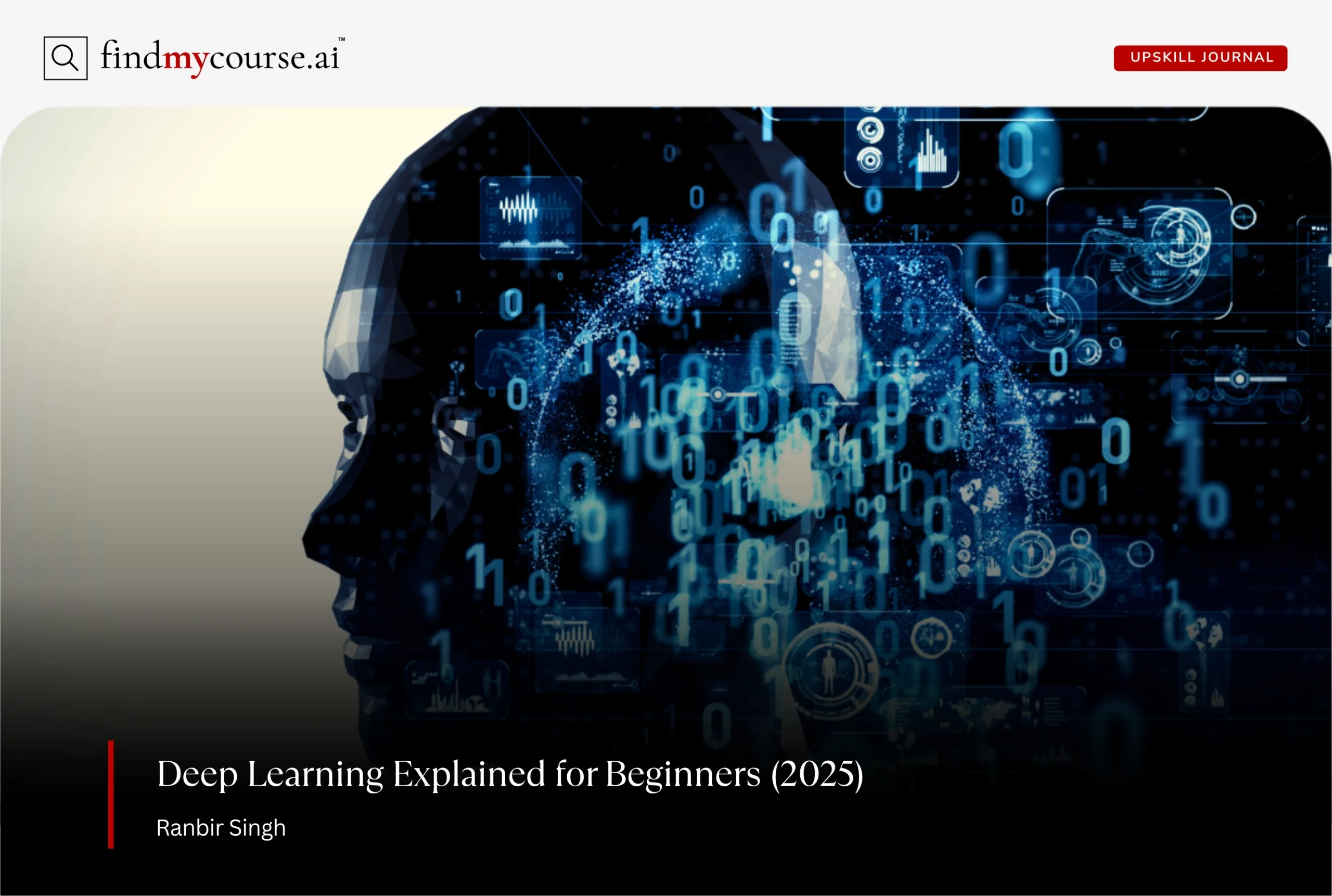Technology is no longer just calculating—it’s learning to see, hear, and decide. From self-driving cars to voice assistants, intelligent systems are transforming our world. At the core of this shift is Deep Learning, a powerful type of artificial intelligence that learns from data to make decisions and recognize patterns. But what exactly is it, and how does it work? This guide breaks it down in simple terms—explaining how it powers modern innovations, how it differs from other AI, and how you can start learning it yourself.
How Machines Learn to Think Like Us
At its core, machines use deep learning to learn from data and improve over time—without needing explicit programming for each task. It’s a branch of artificial intelligence (AI) that mimics how our brains process information.
The term “deep” refers to the multiple layers in a learning model. Additionally, as information passes through each layer, the system uncovers more complex patterns. For example, the first layer might spot edges in an image, while deeper layers recognize shapes, objects, or even emotions.
Unlike traditional programming, which follows clear rules, this enables systems to “figure things out” on their own. And the more data they process, the smarter they get.
Why Deep Learning Matters More Than Ever
From our daily routines to life-saving technology, Deep Learning is everywhere. And its impact is profound.
- In Healthcare: It helps doctors detect diseases like cancer, sometimes earlier than humans can. Scans, X-rays, and patient histories become data points the system analyzes for patterns no eye could catch.
- In Language: Translation apps, voice assistants, and chatbots rely on it to understand, respond, and even predict what we mean.
- In Transportation: Self-driving cars use it to recognize traffic signs, predict movement, and make split-second decisions on the road.
- In Entertainment: Streaming platforms suggest movies based on your mood, behavior, and even what people like you enjoy—all powered by Deep Learning.
So, the power of this technology lies in its ability to learn, adapt, and evolve. It doesn’t just automate tasks—it transforms them.
Inside the Mind of a Neural Network
To grasp the working mechanism, imagine how people learn. We observe the world, make predictions, get things wrong, and adjust based on feedback. Over time, we get better. Machines, surprisingly, learn in much the same way—though their experience comes from data, not life.
At the core of Deep Learning is a powerful structure called a neural network, inspired by the human brain. Instead of biological neurons, it uses digital ones, arranged in layers that each serve a unique purpose:
- Input Layer – This is where the raw data enters the system—whether it’s an image, a voice recording, or a sentence of text.
- Hidden Layers – These are the brain of the operation. Each layer processes the input a bit more deeply, detecting patterns, relationships, or subtle features. The deeper the network, the more abstract the insights.
- Output Layer – This layer produces the final result: a prediction, a label, a decision. It’s what the system believes is the best answer based on everything it has learned.
As the model is trained on more data, it constantly tweaks its internal connections to reduce errors and improve accuracy—just like a person refining a skill with experience.
Thus, the magic lies in this ability to learn from vast amounts of data and improve without direct human instruction.
From Data to Decisions: The Learning Process Explained
Let’s walk through how Deep Learning goes from zero knowledge to powerful predictions:
Step 1: Data Collection
High-quality, labeled data is essential. Whether it’s images, audio, or numbers, the system learns from what it sees.
Step 2: Model Building
An appropriate neural network is chosen—some are better for images, others for language. This model defines how learning happens.
Step 3: Training
This is where the magic begins. The model processes the data, makes predictions, sees where it went wrong, and adjusts. This happens over thousands—even millions—of cycles.
Step 4: Evaluation
The model is tested with new data. If it performs well, it’s ready for the real world. If not, it goes back for more training.
Step 5: Deployment
Once refined, the model can be used in apps, websites, or devices. It keeps learning and improving in real time.
Types of Deep Learning Models You May Hear About
Different problems call for different tools. Here are a few models that make it so versatile:
- Convolutional Neural Networks (CNNs): Perfect for recognizing patterns in images and videos.
- Recurrent Neural Networks (RNNs): Great at handling sequences—like predicting the next word in a sentence.
- Transformers: Now the foundation of language models like ChatGPT, capable of understanding context and nuance.
Each of these models has transformed industries—from medical diagnostics to social media feeds.
How Deep Learning Differs From Traditional Machine Learning
While both are forms of artificial intelligence, they learn in different ways. Traditional machine learning requires humans to define which features matter, while deep learning automatically discovers them during training. This makes deep learning better suited for large datasets and unstructured data like images, audio, or text.
| Aspect | Traditional Machine Learning | Deep Learning |
| Feature Selection | Manual, based on human input | Automatic, learned from data |
| Data Type | Structured (e.g., spreadsheets) | Unstructured (e.g., images, text, sound) |
| Performance with Data | May plateau with large data | Improves as more data is added |
| Model Complexity | Simpler models (e.g., decision trees, SVMs) | Complex neural networks with multiple layers |
| Common Use Cases | Fraud detection, spam filtering | Image recognition, speech processing, language models |
Getting Started: Your Path into Modern AI
Curious to try it yourself? Getting started is more approachable than ever.
- Begin with Python: A beginner-friendly language that powers most tools.
- Take a foundational course: Many platforms let you study online, for example, Introduction to Deep Learning by Purdue University on edX gives you a hands-on start into building and understanding modern neural networks..
- Practice with real data: Play with simple image or text classification problems. Learn by doing.
- Use libraries like TensorFlow or PyTorch: These tools simplify complex tasks and help you build your own models quickly.
- Join the community: Platforms like Kaggle and GitHub offer challenges, code samples, and support from fellow learners.
You don’t need a PhD to begin—just curiosity and consistency.
What’s Ahead: The Next Evolution of Learning Machines
As technology evolves, Deep Learning is expected to become even more efficient and human-like.
Emerging trends include:
- TinyML: Compact models that run directly on phones or smart devices, without needing the cloud.
- Multimodal learning: Systems that understand images, speech, and text together—like how humans process the world.
- Self-supervised learning: Models that learn from unlabeled data, making them faster and cheaper to train.
The goal isn’t just smarter machines—it’s more useful, responsive, and human-aware technology.
Final Thoughts
As intelligent systems become more woven into daily life, understanding how they learn and evolve isn’t just for researchers—it’s valuable for everyone. From voice assistants to self-driving cars, deep learning is helping machines do things we once thought only humans could do. While the journey ahead includes challenges, the potential is limitless for those curious enough to explore. And whenever you’re ready to learn more, experiment, or build something of your own—our AI assistant right here to help.


